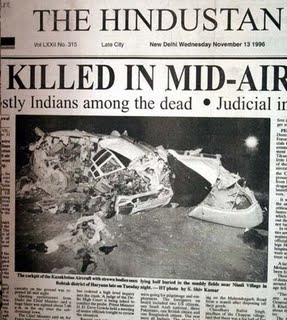 The big picture often does not make sense. It is hard to explain acres of farmlands in the black jaws of a tsunami. Or little dinky cars and homes and matchstick people floating away to an unknown place.
The big picture often does not make sense. It is hard to explain acres of farmlands in the black jaws of a tsunami. Or little dinky cars and homes and matchstick people floating away to an unknown place.
The Japanese are largely stoic and very determined people and I still remember stories narrated by a relative settled in Japan about how a bank in Tokyo kept copies of important records and data in an alternate location away from the main office located in a seismic zone. When mild earthquakes rattle Tokyo, people in skyscrapers, schools and shopping malls know the drill. No one dies in a stampede.
This is a nation that knows how to face a crisis and devastation without hysteria. But this time, it is different. Even though to many of us, an earthquake of 8.4 magnitude in Japan means nothing more than riveting television, international news channels are showing the micro details of this overwhelming tragedy, speaking to people trapped in buildings, showing images of others waving white clothes from the windows of flooded homes.
We are seeing live footage of 12-ft high walls of waves rampaging through cities, tearing apart roof tops, gathering debris. Air and train travel has been disrupted. A ship carrying a 100 people has been swept away. Oil refineries are on fire. Communication lines have snapped. There are fears of radio active leaks. Even then it is hard not to be impressed by the matter-of-fact way in which Japan is reacting to possibly the worst natural disaster in its history.
An emergency response headquarters as well as evacuation centres have been set up and Prime Minister Naoto Kan made a becalming, reassuring television statement. Compare this poise to the terrible way disasters, natural or otherwise are managed in India.Thousands of people were killed and several lakhs displaced in India during the 2004 Indian Ocean tsunami. We still don’t know how many of the displaced have been rehabilitated.
We are never prepared for a calamity and the official response, be it to a child dying after getting caught in an airport escalator or to kids falling into open drains or something as major as the 1996 Charkhi Dadri mid-air collision, is always inadequate, sluggish and sloppy. In 1994, a Saudi-Arabian boeing and a Kazakhstan airlines flight smashed into each other over the village of Charkhi Dadri, Haryana. 349 people died and it was reported later that Indira Gandhi International Airport did not have a secondary surveillance radar which exactly reads aircraft altitudes. Absence of mandatory collision avoidance equipment, the fact that civilian airspace around New Delhi had just one corridor for departures and arrivals and a possible miscommunication mid-air, led to a tragedy that could have been avoided.
Even normalcy is not quite working these days. There are stories everyday of banned pesticides being used in India. Of crops being mismanaged. Of starvation deaths and increasing rural poverty as more and more land gets usurped by politicians. The recent CWG mess was enough to show us that we as a nation, have given up expecting exacting standards from those who run our nation for us.
We don’t mind scams, power cuts, roads in constant disrepair or the slowly creeping tsunami of incompetence and corruption that is threatening to swallow every aspect of polity and civil life. At this time, we must pray for the Japanese though as time has shown us in the past, they will come back stronger from this tragedy. Us? We will get by. With prayers, a bit of jugaad and a state of constant hope. Even if there is a seismic shudder sometime in the future, we will shrug. And go on.






Bulls eye Reema! The poise of the Japanese as a nation when under assault from natural calamities is, indeed, formidable! And yes, our own national ‘antics’ make a poor show by comparison, to say the least. My prayers for those brave people battling the forces of nature, out there.